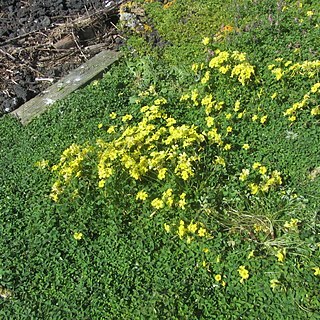Perennial with short, vertical, much-branched caudex and ∞ fleshy taproots. Lvs all basal, glab. or furfuraceous, entire to denticulate to pinnatifid. Scapes ± furfuraceous, naked, unbranched, striate. Bracteoles deltoid to elliptic or lanceolate, obtuse to acuminate. Florets yellow, conspicuously exceeding phyll. Achenes narrowed to base, distinctly ribbed, the ribs smooth. Pappus-hairs c. 14-24, stiff, brownish, widened to membranous base, barbellate above.
An erect herb. It forms tubers. The root tubers are branching. It keeps growing from year to year. It grows 15-80 cm high. The flowers are yellow.

